#vereya
Photo
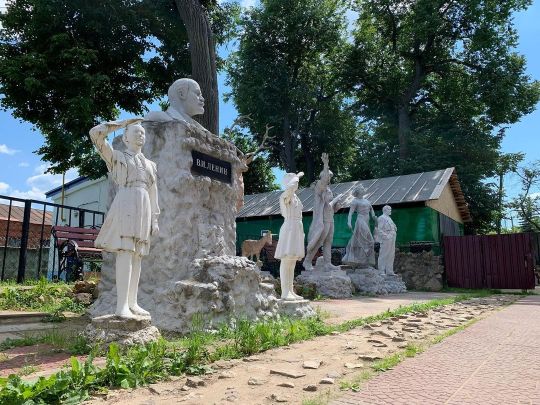
И вновь продолжается бой, И сердцу тревожно в груди. И Ленин такой молодой, И юный — Октябрь впереди! #Russia🇷🇺 #Vereya (at г. Верея) https://www.instagram.com/p/Cfd_YmAjJZl/?igshid=NGJjMDIxMWI=
0 notes
Note
🪶 Verena and Shreya?
Aww TYSM for asking about them!!
Verena is someone who always runs hot (I mean she is a Sun and Fire-Att) so whenever she and Shreya have movie or show binging nights really any night, and day she cuddles next to her and wraps her body around her. They don't even need blankets but they're there 😭
This is literally them
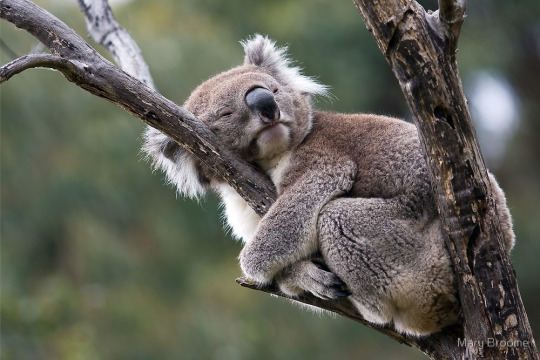
#asks#of thoughts and feathers 🪶#playchoices#the elementalists#shreya mistry#shreya mistry x mc#verena solaris oc#vereya❤️🔥
2 notes
·
View notes
Text
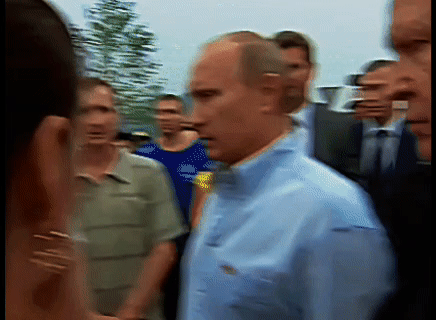




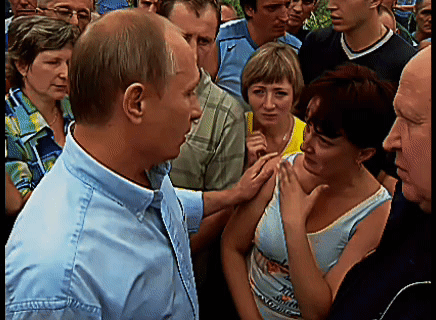
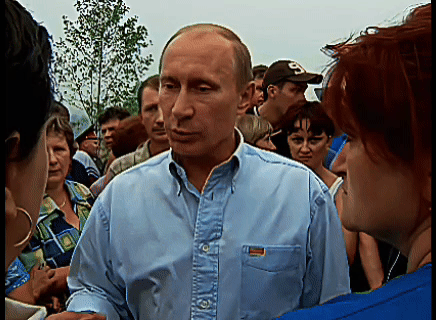
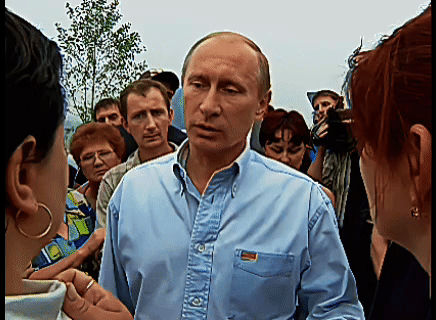




July 30, 2010
Verkhnyaya Vereya.
The Prime Minister promised the disaster victims that by the winter, all the houses in the village would be rebuilt and informed them of the financial assistance to be provided.
4 notes
·
View notes
Text
ARCHEOLOGIA / Trovato in Russia il sigillo personale di un ufficiale della Grande Armata di Napoleone
#ARCHEOLOGIA / Trovato in #Russia il sigillo personale di un ufficiale della Grande Armata di #Napoleone
Il reperto apparteneva al tenente Louis von Gadenstedt, catturato l'11 ottobre 1812 durante la presa della cittadella da parte dei russi.
La cittadina di Vereya, sul fiume Protva (© Istituto di archeologia dell’Accademia russa delle scienze).
Il sigillo di un ufficiale della “Grande Armata” di Napoleone è stato scoperto dagli archeologi dell’Istituto di archeologia dell’Accademia delle scienze russa durante gli scavi a Vereya, cittadina della Russia europea centrale compresa nell’oblast’ di Mosca e situata 11 km a sudovest della…

View On WordPress
#Accademia russa delle scienze#archeologia#campagna di Russia#Grande Armata#guerre napoleoniche#Napoleone#notizie#Ottocento#Russia#scavi archeologici#scoperte#sigillo
2 notes
·
View notes
Text
The Battle of Maloyaroslavets on 24 October 1812 by Peter von Hess
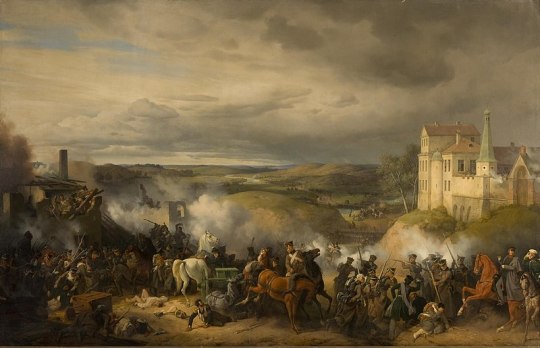
The Battle of Maloyaroslavets took place on 24 October 1812 as part of the French invasion of Russia. It was Kutuzov's decisive battle to force Napoleon to retreat northwest over Mozhaisk to Smolensk on the devastated route of his advance with a higher probability of starvation. Kutuzov's next attack against the remnants of the Grande Armée, the Battle of Krasnoi, began on 15 November 1812, three weeks later.
The last major battle had been the Battle of Tarutino on 18 October 1812, that was won by the Russian army. A great part of the large mob of non-combatants, invalids from the hospitals, women, fugitive inhabitants of Moscow, whose number can only be guessed at, was directed upon Vereya and the straight road to Smolensk and only the fighting force was to march towards Kaluga. On 19 October 1812, Napoleon had retreated from Moscow and marched south-west to Kaluga, Eugène de Beauharnais leading the advance. The French army leaving Moscow was estimated by Wilson: 90,000 effective infantry, 14,000 feeble cavalry, 12,000 armed men employed in the various services of artillery, engineers, gendarmerie, head-quarter staff, equipages, and commissariat, and more than 20,000 non-combatants, sick, and wounded.
Alexis Joseph Delzons commanded the lead units going to the village of Maloyaroslavets. The bridges across Luzha River were destroyed by order of local authorities. Delzons' soldiers entered the city over a dam and built a pontoon bridge next to the destroyed one. Then Delzons attacked the heights on which the village rested. On the evening of October 23 Delzons placed two of his battalions in the village.
On the 24 October 1812 General Dokhturov entered the town from the south and found the French spearhead had seized a bridgehead. Fierce fighting began. General Raevski arrived with 10,000 more Russians; once more they took the town, though not the bridgehead. De Beauharnais threw in his 15th (Italian) division, under Domenico Pino (Minister of War of the Kingdom of Italy), and by evening they had again expelled the Russians. Armand Charles Guilleminot was the first who entered the city. During the course of the engagement the town changed hands no fewer than eight times and it was quoted that in particular the Italian Royal Guard under Eugène de Beauharnais 'had displayed qualities which entitled it evermore to take rank amongst the bravest troops of Europe'. Marshal Kutuzov arrived and decided against a pitched battle with the Grand Army the next day, and to retire instead to the prepared line of defense at Kaluga. The mainly French and Italian forces won a victory on the day, but Napoleon might have realized that "unless with a new Borodino" the way through Kaluga and Medyn was closed. This allowed Kutuzov to fulfill his strategic plans to force Napoleon on the way of retreat in the north, through Mozhaisk and Smolensk, the route of his advance that he had wished to avoid. French casualties were about 6,000–8,000, while the Russians lost about 8,000 men killed and wounded.
Sources. The Battle of Maloyaroslavets, from Wikipedia, the free encyclopedia
youtube
#Отечественная война 1812 года#War of 1812#Художник#Начинающий художник#famous artists#Эрмитаж#Hermitage Museum#Russian Empire#Российская империя#История России#Наполеон#Napoleon Bonaparte#Наполеоновские войны#Михаил Кутузов#Mikhail Kutuzov#Peter von Hess#theintexp#Youtube
1 note
·
View note
Text
Купить гидротестер на Авито в Верея
https://www.avito.ru/vereya?q=%D0%B3%D0%B8%D0%B4%D1%80%D0%BE%D1%82%D0%B5%D1%81%D1%82%D0%B5%D1%80
0 notes
Photo

Liberation Stara Zagora
During the 1877-1878 Russo-Turkish War of Liberation Stara Zagora was among the first to experience freedom and destruction. Confronted with attacks from 30,000-strong Turkish army, the small force of Russians and Bulgarian volunteers was compelled to retreat. The town was plundered and destroyed, and reduced to ashes.
During the war against fascism Stara Zagora was the centre of partisan activities in that area, Today Stara Zagora is a big industrial centre, .and there is a modern opera house, a symphony orchestra, an art gallery, a sports hall and a swimming pool.
Tourist attractions are The District History Museum with exhibits showing the development of Stara Zagora and its district from ancient times to the present day. There are also prehistoric dwellings; The Southern Gate of the fortress wall and an ancient building are 2nd century and there are mosaics from the 4th century private turkey tours.
The Geo Milev Museum House where the poet Geo Milev lived, has a new building in the courtyard devoted to the poets Kiril Ifristov, Nikolai Liliev, Ivan Hadjihristov and Vesselin Hanchev who were all born in Stara Zagora.
There are monuments to those who fell during the 1875 uprising in Stara Zagora, and to the Soviet Army and Lenin.
STARA ZAGORA
The V.I. Lenin Park (Ayazmo), has over 100 types of plants and trees from Lebanon, Turkey, Greece, Italy and Spain-In the park there is an open-air theatre, chalet, restaurant and a stadium.
Hotels: Vereya, three stars, 15 single rooms, 209 double rooms and 5 suites, restaurant, bar, night club, coffee shop, information desk and rent-a-car service; Zhelezmk, two stars, with eight single rooms, 89 double rooms and 5 suites, restaurant and information desk.
Haskovo-Kurdjali (54 km)
About 54 km south of Haskovo is Kurdjali (pop. 58,000), on the left bank of the River Arda, founded in the early years of Ottoman rule. Under the Berlin Peace Treaty, Haskovo was incorporated into the boundaries of Eastern Roumelia. After the Unification of the Principality of Bulgaria with Eastern Roumelia in 1885, Kurdjali remained within the boundaries of Turkey- It was not until after the Balkan wars that it was restored to Bulgaria.
The rapid development of Kurdjali today is largely due to the two huge dams Stouden Kladenets, east of the town,and Kurdjali to the west.
Hotel Arpezos, three stars, 27 single rooms, 98 double rooms and 13 suites, restaurant, bar, night club, taverna, coffee shop, swimming pools (indoor and outdoor) and rent-a-car service.
Sights: The famous Kurdjali pyramids in the nearby villages of Dobrovolets,Pove£ and Zimzelen are natural formations with colours varying from pale green to pink and yellow according to the various minerals in the rocks.
0 notes
Photo
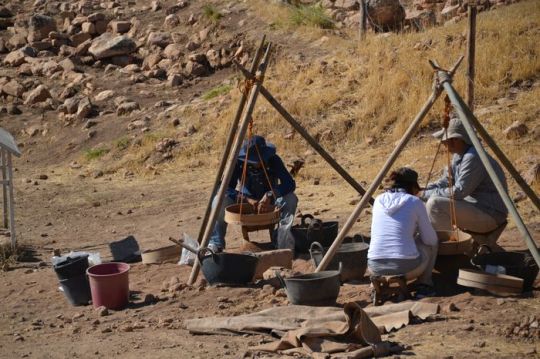
District History Museum
Points of interest are The District History Museum, showing the way of life in the post-liberation period, in Paskalev House, home crafts to the end of the 19th century in the Shishmanov House, church art during the National Revival in the Cyril and Methodius church; Church of St Archangel Michael with its iconostasis of ornate woodcarving executed in 1962; the Fortress of Assen near the village of Klokotnitsa and Kenana park, 2 km west of Haskovo.
Balkantourist bureau, Hotel Aida, three stars, with 135 beds in single and double rooms and five suites, restaurant, bar.
Harmanli (pop, 20,000) lies 33 kilometres from Haskovo in a picturesque locality where the Harmanliska River flows into the Maritsa, Harmanli was founded in the 16th century. A bridge, Gurbav Most, spanning the Harmanliska River dates from that period. It is a cultural monument. The wall of a caravan-serai built in 1510 has been preserved in the centre of the town. Today the textile, ceramic and food industries are well developed.
Hotel Hebros, in the centre of Harmanli has 129 beds. The Gergana Motel, two stars, near the E-80 highway, has 16 double rooms, a restaurant, and open-air restaurant, night club and souvenir kiosk private turkey tours.
Svilengrad (population 15,170) is two kilometres from the Bulgarian-Greek border and 15 kilometres from the Turkish border. Once a Thracian settlement, it was later a roadside Roman fortress known as Burdenis. Interesting sights are Stariya Most (the Old Bridge), also known as the Mustafa Pasha Bridge, built with large blocks of stone (1529) and 295 metres long Svilena Hotel, five stars, 202 beds, restaurant, bar, taverna, coffee shop, information desk and rent-a-car service.
Another interesting place is the village of Mezek, six kilometres southwest of Svilengrad with its 4th century tomb west of Mezek rise the walls of Neutzikon, one of the best preserved medieval fortresses in Bulgaria, probably built in the 9-12 centuries. At the Kapitan Andreevo border crossing to lurkey there is a motel and restaurant.
HASKOVO- DIMITROVORAD – STARA ZAGORA
(61 km), 10 km along the E-85 highway is Dimitrovgrad (pop. 50,0). Dimitrovgrad was built in 1947 on the site of three villages — Rakovski, Mariino and Chernokonyovo. Over 50,000 young men and women volunteers took part in building the town. The first museum of socialist construction was opened in 1954. The Penyo Penev exhibition, named after the Bulgarian
Foet is in the house where he lived in 1956. DimitrovianDays of oetry are held annually when the Penyo Penev Prize for Literature is awarded.
Hotels: Moskva, one star, with 41 beds and 2 suites, restaurant, taverna and information desk; Panorama, in the Penyo Penev park.
Stara Zagora (pop. 134,000) lies in the folds of the Sredna Gora mountains, on the large plain of the same name, ft is the sixth largest city in Bulgaria. The Thracians founded the town of Beroe here in the 5th-6th centuries B.C. It was renamed Augusta Trayana when the Romans settled there. In the 5th century (then known as Vereya) it was destroyed by the Huns; it was rebuilt and was again destroyed by the Avars and Slavs in the 7th century. In the Middle Ages its name was Boryui and after its capture by the Ottomans was given the name of Eski Zagra, and was inhabited by both Bulgarians and Turks. The town flourished economically and with the development of education revolutionary ideas emerged. In 1875 an uprising broke out led by the shoe maker Kolyu Ganchev.
0 notes
Photo

District History Museum
Points of interest are The District History Museum, showing the way of life in the post-liberation period, in Paskalev House, home crafts to the end of the 19th century in the Shishmanov House, church art during the National Revival in the Cyril and Methodius church; Church of St Archangel Michael with its iconostasis of ornate woodcarving executed in 1962; the Fortress of Assen near the village of Klokotnitsa and Kenana park, 2 km west of Haskovo.
Balkantourist bureau, Hotel Aida, three stars, with 135 beds in single and double rooms and five suites, restaurant, bar.
Harmanli (pop, 20,000) lies 33 kilometres from Haskovo in a picturesque locality where the Harmanliska River flows into the Maritsa, Harmanli was founded in the 16th century. A bridge, Gurbav Most, spanning the Harmanliska River dates from that period. It is a cultural monument. The wall of a caravan-serai built in 1510 has been preserved in the centre of the town. Today the textile, ceramic and food industries are well developed.
Hotel Hebros, in the centre of Harmanli has 129 beds. The Gergana Motel, two stars, near the E-80 highway, has 16 double rooms, a restaurant, and open-air restaurant, night club and souvenir kiosk private turkey tours.
Svilengrad (population 15,170) is two kilometres from the Bulgarian-Greek border and 15 kilometres from the Turkish border. Once a Thracian settlement, it was later a roadside Roman fortress known as Burdenis. Interesting sights are Stariya Most (the Old Bridge), also known as the Mustafa Pasha Bridge, built with large blocks of stone (1529) and 295 metres long Svilena Hotel, five stars, 202 beds, restaurant, bar, taverna, coffee shop, information desk and rent-a-car service.
Another interesting place is the village of Mezek, six kilometres southwest of Svilengrad with its 4th century tomb west of Mezek rise the walls of Neutzikon, one of the best preserved medieval fortresses in Bulgaria, probably built in the 9-12 centuries. At the Kapitan Andreevo border crossing to lurkey there is a motel and restaurant.
HASKOVO- DIMITROVORAD – STARA ZAGORA
(61 km), 10 km along the E-85 highway is Dimitrovgrad (pop. 50,0). Dimitrovgrad was built in 1947 on the site of three villages — Rakovski, Mariino and Chernokonyovo. Over 50,000 young men and women volunteers took part in building the town. The first museum of socialist construction was opened in 1954. The Penyo Penev exhibition, named after the Bulgarian
Foet is in the house where he lived in 1956. DimitrovianDays of oetry are held annually when the Penyo Penev Prize for Literature is awarded.
Hotels: Moskva, one star, with 41 beds and 2 suites, restaurant, taverna and information desk; Panorama, in the Penyo Penev park.
Stara Zagora (pop. 134,000) lies in the folds of the Sredna Gora mountains, on the large plain of the same name, ft is the sixth largest city in Bulgaria. The Thracians founded the town of Beroe here in the 5th-6th centuries B.C. It was renamed Augusta Trayana when the Romans settled there. In the 5th century (then known as Vereya) it was destroyed by the Huns; it was rebuilt and was again destroyed by the Avars and Slavs in the 7th century. In the Middle Ages its name was Boryui and after its capture by the Ottomans was given the name of Eski Zagra, and was inhabited by both Bulgarians and Turks. The town flourished economically and with the development of education revolutionary ideas emerged. In 1875 an uprising broke out led by the shoe maker Kolyu Ganchev.
0 notes
Photo

District History Museum
Points of interest are The District History Museum, showing the way of life in the post-liberation period, in Paskalev House, home crafts to the end of the 19th century in the Shishmanov House, church art during the National Revival in the Cyril and Methodius church; Church of St Archangel Michael with its iconostasis of ornate woodcarving executed in 1962; the Fortress of Assen near the village of Klokotnitsa and Kenana park, 2 km west of Haskovo.
Balkantourist bureau, Hotel Aida, three stars, with 135 beds in single and double rooms and five suites, restaurant, bar.
Harmanli (pop, 20,000) lies 33 kilometres from Haskovo in a picturesque locality where the Harmanliska River flows into the Maritsa, Harmanli was founded in the 16th century. A bridge, Gurbav Most, spanning the Harmanliska River dates from that period. It is a cultural monument. The wall of a caravan-serai built in 1510 has been preserved in the centre of the town. Today the textile, ceramic and food industries are well developed.
Hotel Hebros, in the centre of Harmanli has 129 beds. The Gergana Motel, two stars, near the E-80 highway, has 16 double rooms, a restaurant, and open-air restaurant, night club and souvenir kiosk private turkey tours.
Svilengrad (population 15,170) is two kilometres from the Bulgarian-Greek border and 15 kilometres from the Turkish border. Once a Thracian settlement, it was later a roadside Roman fortress known as Burdenis. Interesting sights are Stariya Most (the Old Bridge), also known as the Mustafa Pasha Bridge, built with large blocks of stone (1529) and 295 metres long Svilena Hotel, five stars, 202 beds, restaurant, bar, taverna, coffee shop, information desk and rent-a-car service.
Another interesting place is the village of Mezek, six kilometres southwest of Svilengrad with its 4th century tomb west of Mezek rise the walls of Neutzikon, one of the best preserved medieval fortresses in Bulgaria, probably built in the 9-12 centuries. At the Kapitan Andreevo border crossing to lurkey there is a motel and restaurant.
HASKOVO- DIMITROVORAD – STARA ZAGORA
(61 km), 10 km along the E-85 highway is Dimitrovgrad (pop. 50,0). Dimitrovgrad was built in 1947 on the site of three villages — Rakovski, Mariino and Chernokonyovo. Over 50,000 young men and women volunteers took part in building the town. The first museum of socialist construction was opened in 1954. The Penyo Penev exhibition, named after the Bulgarian
Foet is in the house where he lived in 1956. DimitrovianDays of oetry are held annually when the Penyo Penev Prize for Literature is awarded.
Hotels: Moskva, one star, with 41 beds and 2 suites, restaurant, taverna and information desk; Panorama, in the Penyo Penev park.
Stara Zagora (pop. 134,000) lies in the folds of the Sredna Gora mountains, on the large plain of the same name, ft is the sixth largest city in Bulgaria. The Thracians founded the town of Beroe here in the 5th-6th centuries B.C. It was renamed Augusta Trayana when the Romans settled there. In the 5th century (then known as Vereya) it was destroyed by the Huns; it was rebuilt and was again destroyed by the Avars and Slavs in the 7th century. In the Middle Ages its name was Boryui and after its capture by the Ottomans was given the name of Eski Zagra, and was inhabited by both Bulgarians and Turks. The town flourished economically and with the development of education revolutionary ideas emerged. In 1875 an uprising broke out led by the shoe maker Kolyu Ganchev.
0 notes
Photo
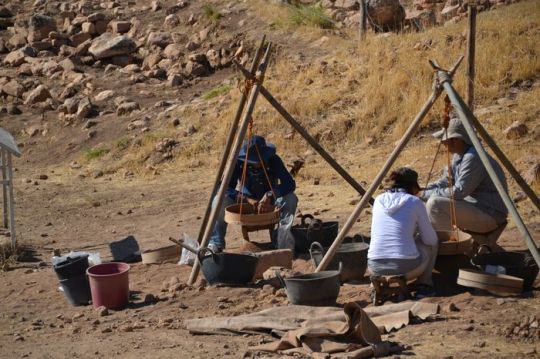
District History Museum
Points of interest are The District History Museum, showing the way of life in the post-liberation period, in Paskalev House, home crafts to the end of the 19th century in the Shishmanov House, church art during the National Revival in the Cyril and Methodius church; Church of St Archangel Michael with its iconostasis of ornate woodcarving executed in 1962; the Fortress of Assen near the village of Klokotnitsa and Kenana park, 2 km west of Haskovo.
Balkantourist bureau, Hotel Aida, three stars, with 135 beds in single and double rooms and five suites, restaurant, bar.
Harmanli (pop, 20,000) lies 33 kilometres from Haskovo in a picturesque locality where the Harmanliska River flows into the Maritsa, Harmanli was founded in the 16th century. A bridge, Gurbav Most, spanning the Harmanliska River dates from that period. It is a cultural monument. The wall of a caravan-serai built in 1510 has been preserved in the centre of the town. Today the textile, ceramic and food industries are well developed.
Hotel Hebros, in the centre of Harmanli has 129 beds. The Gergana Motel, two stars, near the E-80 highway, has 16 double rooms, a restaurant, and open-air restaurant, night club and souvenir kiosk private turkey tours.
Svilengrad (population 15,170) is two kilometres from the Bulgarian-Greek border and 15 kilometres from the Turkish border. Once a Thracian settlement, it was later a roadside Roman fortress known as Burdenis. Interesting sights are Stariya Most (the Old Bridge), also known as the Mustafa Pasha Bridge, built with large blocks of stone (1529) and 295 metres long Svilena Hotel, five stars, 202 beds, restaurant, bar, taverna, coffee shop, information desk and rent-a-car service.
Another interesting place is the village of Mezek, six kilometres southwest of Svilengrad with its 4th century tomb west of Mezek rise the walls of Neutzikon, one of the best preserved medieval fortresses in Bulgaria, probably built in the 9-12 centuries. At the Kapitan Andreevo border crossing to lurkey there is a motel and restaurant.
HASKOVO- DIMITROVORAD – STARA ZAGORA
(61 km), 10 km along the E-85 highway is Dimitrovgrad (pop. 50,0). Dimitrovgrad was built in 1947 on the site of three villages — Rakovski, Mariino and Chernokonyovo. Over 50,000 young men and women volunteers took part in building the town. The first museum of socialist construction was opened in 1954. The Penyo Penev exhibition, named after the Bulgarian
Foet is in the house where he lived in 1956. DimitrovianDays of oetry are held annually when the Penyo Penev Prize for Literature is awarded.
Hotels: Moskva, one star, with 41 beds and 2 suites, restaurant, taverna and information desk; Panorama, in the Penyo Penev park.
Stara Zagora (pop. 134,000) lies in the folds of the Sredna Gora mountains, on the large plain of the same name, ft is the sixth largest city in Bulgaria. The Thracians founded the town of Beroe here in the 5th-6th centuries B.C. It was renamed Augusta Trayana when the Romans settled there. In the 5th century (then known as Vereya) it was destroyed by the Huns; it was rebuilt and was again destroyed by the Avars and Slavs in the 7th century. In the Middle Ages its name was Boryui and after its capture by the Ottomans was given the name of Eski Zagra, and was inhabited by both Bulgarians and Turks. The town flourished economically and with the development of education revolutionary ideas emerged. In 1875 an uprising broke out led by the shoe maker Kolyu Ganchev.
0 notes
Photo
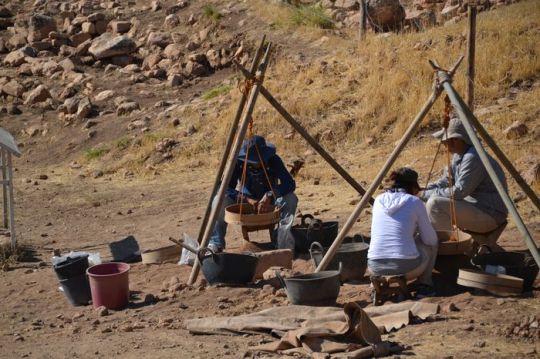
District History Museum
Points of interest are The District History Museum, showing the way of life in the post-liberation period, in Paskalev House, home crafts to the end of the 19th century in the Shishmanov House, church art during the National Revival in the Cyril and Methodius church; Church of St Archangel Michael with its iconostasis of ornate woodcarving executed in 1962; the Fortress of Assen near the village of Klokotnitsa and Kenana park, 2 km west of Haskovo.
Balkantourist bureau, Hotel Aida, three stars, with 135 beds in single and double rooms and five suites, restaurant, bar.
Harmanli (pop, 20,000) lies 33 kilometres from Haskovo in a picturesque locality where the Harmanliska River flows into the Maritsa, Harmanli was founded in the 16th century. A bridge, Gurbav Most, spanning the Harmanliska River dates from that period. It is a cultural monument. The wall of a caravan-serai built in 1510 has been preserved in the centre of the town. Today the textile, ceramic and food industries are well developed.
Hotel Hebros, in the centre of Harmanli has 129 beds. The Gergana Motel, two stars, near the E-80 highway, has 16 double rooms, a restaurant, and open-air restaurant, night club and souvenir kiosk private turkey tours.
Svilengrad (population 15,170) is two kilometres from the Bulgarian-Greek border and 15 kilometres from the Turkish border. Once a Thracian settlement, it was later a roadside Roman fortress known as Burdenis. Interesting sights are Stariya Most (the Old Bridge), also known as the Mustafa Pasha Bridge, built with large blocks of stone (1529) and 295 metres long Svilena Hotel, five stars, 202 beds, restaurant, bar, taverna, coffee shop, information desk and rent-a-car service.
Another interesting place is the village of Mezek, six kilometres southwest of Svilengrad with its 4th century tomb west of Mezek rise the walls of Neutzikon, one of the best preserved medieval fortresses in Bulgaria, probably built in the 9-12 centuries. At the Kapitan Andreevo border crossing to lurkey there is a motel and restaurant.
HASKOVO- DIMITROVORAD – STARA ZAGORA
(61 km), 10 km along the E-85 highway is Dimitrovgrad (pop. 50,0). Dimitrovgrad was built in 1947 on the site of three villages — Rakovski, Mariino and Chernokonyovo. Over 50,000 young men and women volunteers took part in building the town. The first museum of socialist construction was opened in 1954. The Penyo Penev exhibition, named after the Bulgarian
Foet is in the house where he lived in 1956. DimitrovianDays of oetry are held annually when the Penyo Penev Prize for Literature is awarded.
Hotels: Moskva, one star, with 41 beds and 2 suites, restaurant, taverna and information desk; Panorama, in the Penyo Penev park.
Stara Zagora (pop. 134,000) lies in the folds of the Sredna Gora mountains, on the large plain of the same name, ft is the sixth largest city in Bulgaria. The Thracians founded the town of Beroe here in the 5th-6th centuries B.C. It was renamed Augusta Trayana when the Romans settled there. In the 5th century (then known as Vereya) it was destroyed by the Huns; it was rebuilt and was again destroyed by the Avars and Slavs in the 7th century. In the Middle Ages its name was Boryui and after its capture by the Ottomans was given the name of Eski Zagra, and was inhabited by both Bulgarians and Turks. The town flourished economically and with the development of education revolutionary ideas emerged. In 1875 an uprising broke out led by the shoe maker Kolyu Ganchev.
0 notes
Text










Oh, nothing. Just Two Fire-Att Girlfriends Being The Cutest Couple Ever to Grace Penderghast 🥹
#power couple energy we love to see it#it’s giving korrasami 👀#playchoices#the elementalists 2#shreya mistry#shreya mistry x mc#vereya❤️🔥#verena solaris oc
5 notes
·
View notes
Photo

Liberation Stara Zagora
During the 1877-1878 Russo-Turkish War of Liberation Stara Zagora was among the first to experience freedom and destruction. Confronted with attacks from 30,000-strong Turkish army, the small force of Russians and Bulgarian volunteers was compelled to retreat. The town was plundered and destroyed, and reduced to ashes.
During the war against fascism Stara Zagora was the centre of partisan activities in that area, Today Stara Zagora is a big industrial centre, .and there is a modern opera house, a symphony orchestra, an art gallery, a sports hall and a swimming pool.
Tourist attractions are The District History Museum with exhibits showing the development of Stara Zagora and its district from ancient times to the present day. There are also prehistoric dwellings; The Southern Gate of the fortress wall and an ancient building are 2nd century and there are mosaics from the 4th century private turkey tours.
The Geo Milev Museum House where the poet Geo Milev lived, has a new building in the courtyard devoted to the poets Kiril Ifristov, Nikolai Liliev, Ivan Hadjihristov and Vesselin Hanchev who were all born in Stara Zagora.
There are monuments to those who fell during the 1875 uprising in Stara Zagora, and to the Soviet Army and Lenin.
STARA ZAGORA
The V.I. Lenin Park (Ayazmo), has over 100 types of plants and trees from Lebanon, Turkey, Greece, Italy and Spain-In the park there is an open-air theatre, chalet, restaurant and a stadium.
Hotels: Vereya, three stars, 15 single rooms, 209 double rooms and 5 suites, restaurant, bar, night club, coffee shop, information desk and rent-a-car service; Zhelezmk, two stars, with eight single rooms, 89 double rooms and 5 suites, restaurant and information desk.
Haskovo-Kurdjali (54 km)
About 54 km south of Haskovo is Kurdjali (pop. 58,000), on the left bank of the River Arda, founded in the early years of Ottoman rule. Under the Berlin Peace Treaty, Haskovo was incorporated into the boundaries of Eastern Roumelia. After the Unification of the Principality of Bulgaria with Eastern Roumelia in 1885, Kurdjali remained within the boundaries of Turkey- It was not until after the Balkan wars that it was restored to Bulgaria.
The rapid development of Kurdjali today is largely due to the two huge dams Stouden Kladenets, east of the town,and Kurdjali to the west.
Hotel Arpezos, three stars, 27 single rooms, 98 double rooms and 13 suites, restaurant, bar, night club, taverna, coffee shop, swimming pools (indoor and outdoor) and rent-a-car service.
Sights: The famous Kurdjali pyramids in the nearby villages of Dobrovolets,Pove�� and Zimzelen are natural formations with colours varying from pale green to pink and yellow according to the various minerals in the rocks.
1 note
·
View note
Photo
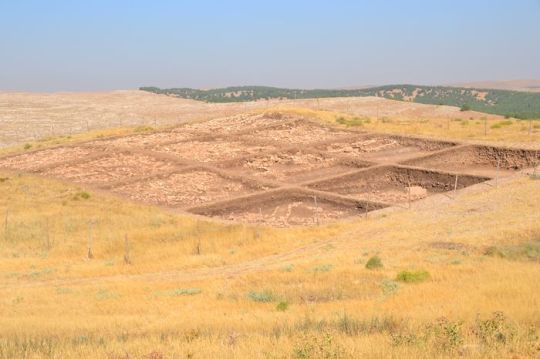
Liberation Stara Zagora
During the 1877-1878 Russo-Turkish War of Liberation Stara Zagora was among the first to experience freedom and destruction. Confronted with attacks from 30,000-strong Turkish army, the small force of Russians and Bulgarian volunteers was compelled to retreat. The town was plundered and destroyed, and reduced to ashes.
During the war against fascism Stara Zagora was the centre of partisan activities in that area, Today Stara Zagora is a big industrial centre, .and there is a modern opera house, a symphony orchestra, an art gallery, a sports hall and a swimming pool.
Tourist attractions are The District History Museum with exhibits showing the development of Stara Zagora and its district from ancient times to the present day. There are also prehistoric dwellings; The Southern Gate of the fortress wall and an ancient building are 2nd century and there are mosaics from the 4th century private turkey tours.
The Geo Milev Museum House where the poet Geo Milev lived, has a new building in the courtyard devoted to the poets Kiril Ifristov, Nikolai Liliev, Ivan Hadjihristov and Vesselin Hanchev who were all born in Stara Zagora.
There are monuments to those who fell during the 1875 uprising in Stara Zagora, and to the Soviet Army and Lenin.
STARA ZAGORA
The V.I. Lenin Park (Ayazmo), has over 100 types of plants and trees from Lebanon, Turkey, Greece, Italy and Spain-In the park there is an open-air theatre, chalet, restaurant and a stadium.
Hotels: Vereya, three stars, 15 single rooms, 209 double rooms and 5 suites, restaurant, bar, night club, coffee shop, information desk and rent-a-car service; Zhelezmk, two stars, with eight single rooms, 89 double rooms and 5 suites, restaurant and information desk.
Haskovo-Kurdjali (54 km)
About 54 km south of Haskovo is Kurdjali (pop. 58,000), on the left bank of the River Arda, founded in the early years of Ottoman rule. Under the Berlin Peace Treaty, Haskovo was incorporated into the boundaries of Eastern Roumelia. After the Unification of the Principality of Bulgaria with Eastern Roumelia in 1885, Kurdjali remained within the boundaries of Turkey- It was not until after the Balkan wars that it was restored to Bulgaria.
The rapid development of Kurdjali today is largely due to the two huge dams Stouden Kladenets, east of the town,and Kurdjali to the west.
Hotel Arpezos, three stars, 27 single rooms, 98 double rooms and 13 suites, restaurant, bar, night club, taverna, coffee shop, swimming pools (indoor and outdoor) and rent-a-car service.
Sights: The famous Kurdjali pyramids in the nearby villages of Dobrovolets,Pove£ and Zimzelen are natural formations with colours varying from pale green to pink and yellow according to the various minerals in the rocks.
1 note
·
View note
Photo

Liberation Stara Zagora
During the 1877-1878 Russo-Turkish War of Liberation Stara Zagora was among the first to experience freedom and destruction. Confronted with attacks from 30,000-strong Turkish army, the small force of Russians and Bulgarian volunteers was compelled to retreat. The town was plundered and destroyed, and reduced to ashes.
During the war against fascism Stara Zagora was the centre of partisan activities in that area, Today Stara Zagora is a big industrial centre, .and there is a modern opera house, a symphony orchestra, an art gallery, a sports hall and a swimming pool.
Tourist attractions are The District History Museum with exhibits showing the development of Stara Zagora and its district from ancient times to the present day. There are also prehistoric dwellings; The Southern Gate of the fortress wall and an ancient building are 2nd century and there are mosaics from the 4th century private turkey tours.
The Geo Milev Museum House where the poet Geo Milev lived, has a new building in the courtyard devoted to the poets Kiril Ifristov, Nikolai Liliev, Ivan Hadjihristov and Vesselin Hanchev who were all born in Stara Zagora.
There are monuments to those who fell during the 1875 uprising in Stara Zagora, and to the Soviet Army and Lenin.
STARA ZAGORA
The V.I. Lenin Park (Ayazmo), has over 100 types of plants and trees from Lebanon, Turkey, Greece, Italy and Spain-In the park there is an open-air theatre, chalet, restaurant and a stadium.
Hotels: Vereya, three stars, 15 single rooms, 209 double rooms and 5 suites, restaurant, bar, night club, coffee shop, information desk and rent-a-car service; Zhelezmk, two stars, with eight single rooms, 89 double rooms and 5 suites, restaurant and information desk.
Haskovo-Kurdjali (54 km)
About 54 km south of Haskovo is Kurdjali (pop. 58,000), on the left bank of the River Arda, founded in the early years of Ottoman rule. Under the Berlin Peace Treaty, Haskovo was incorporated into the boundaries of Eastern Roumelia. After the Unification of the Principality of Bulgaria with Eastern Roumelia in 1885, Kurdjali remained within the boundaries of Turkey- It was not until after the Balkan wars that it was restored to Bulgaria.
The rapid development of Kurdjali today is largely due to the two huge dams Stouden Kladenets, east of the town,and Kurdjali to the west.
Hotel Arpezos, three stars, 27 single rooms, 98 double rooms and 13 suites, restaurant, bar, night club, taverna, coffee shop, swimming pools (indoor and outdoor) and rent-a-car service.
Sights: The famous Kurdjali pyramids in the nearby villages of Dobrovolets,Pove£ and Zimzelen are natural formations with colours varying from pale green to pink and yellow according to the various minerals in the rocks.
0 notes